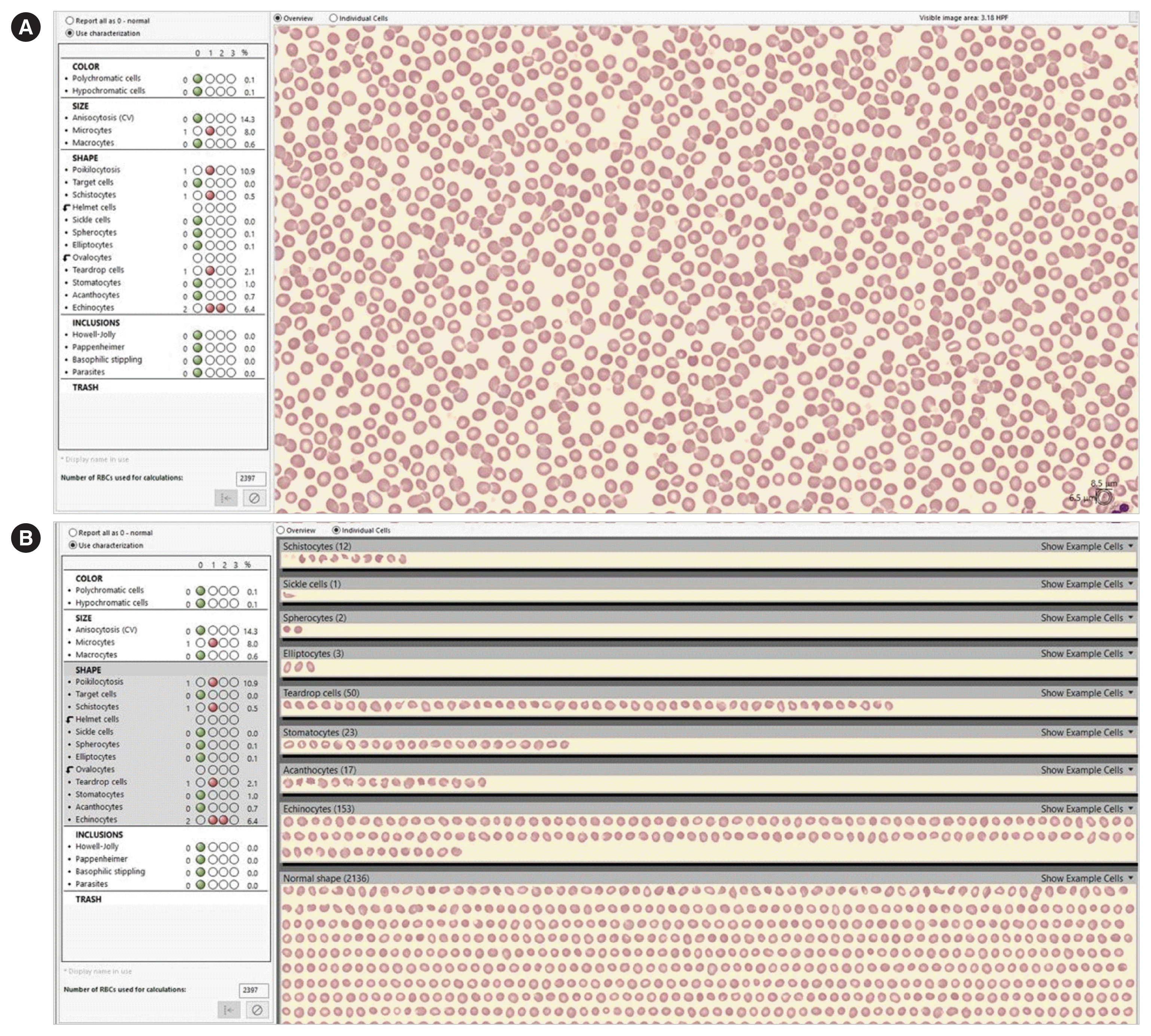1. Stouten K, Riedl JA, Levin MD, van Gelder W. Examination of peripheral blood smears: performance evaluation of a digital microscope system using a large-scale leukocyte database. Int J Lab Hematol. 2015; 37:e137–40.

3. Cornet E, Perol JP, Troussard X. Performance evaluation and relevance of the CellaVision DM96 system in routine analysis and in patients with malignant hematological diseases. Int J Lab Hematol. 2008; 30:536–42.


4. Kratz A, Bengtsson HI, Casey JE, Keefe JM, Beatrice GH, Grzybek DY, et al. Performance evaluation of the CellaVision DM96 system: WBC differentials by automated digital image analysis supported by an artificial neural network. Am J Clin Pathol. 2005; 124:770–81.

5. Criel M, Godefroid M, Deckers B, Devos H, Cauwelier B, Emmerechts J. Evaluation of the red blood cell advanced software application on the CellaVision DM96. Int J Lab Hematol. 2016; 38:366–74.


6. Horn CL, Mansoor A, Wood B, Nelson H, Higa D, Lee LH, et al. Performance of the CellaVision DM96 system for detecting red blood cell morphologic abnormalities. J Pathol Inform. 2015; 6:11.


7. Palmer L, Briggs C, McFadden S, Zini G, Burthem J, Rozenberg G, et al. ICSH recommendations for the standardization of nomenclature and grading of peripheral blood cell morphological features. Int J Lab Hematol. 2015; 37:287–303.


8. Kim HN, Hur M, Kim H, Kim SW, Moon HW, Yun YM. Performance of automated digital cell imaging analyzer Sysmex DI-60. Clin Chem Lab Med. 2017; 56:94–102.


9. Rümke CL, Bezemer PD, Kuik DJ. Normal values and least significant differences for differential leukocyte counts. J Chron Dis. 1975; 28:661–8.


10. Barnes PW, McFadden SL, Machin SJ, Simson E. international consensus group for hematology. The international consensus group for hematology review: suggested criteria for action following automated CBC and WBC differential analysis. Lab Hematol. 2005; 11:83–90.


11. Hervent AS, Godefroid M, Cauwelier B, Billiet J, Emmerechts J. Evaluation of schistocyte analysis by a novel automated digital cell morphology application. Int J Lab Hematol. 2015; 37:588–96.


12. Kratz A, Lee SH, Zini G, Riedl JA, Hur M, Machin S. Digital morphology analyzers in hematology: ICSH review and recommendations. Int J Lab Hematol. 2019; 41:437–47.


13. Zini G, d’Onofrio G, Briggs C, Erber W, Jou JM, Lee SH, et al. ICSH recommendations for identification, diagnostic value, and quantitation of schistocytes. Int J Lab Hematol. 2012; 34:107–16.


14. Yoon J, Kwon JA, Yoon SY, Jang WS, Yang DJ, Nam J, et al. Diagnostic performance of CellaVision DM96 for
Plasmodium vivax and
Plasmodium falciparum screening in peripheral blood smears. Acta Trop. 2019; 193:7–11.

15. Briggs C, Longair I, Slavik M, Thwaite K, Mills R, Thavaraja V, et al. Can automated blood film analysis replace the manual differential? An evaluation of the CellaVision DM96 automated image analysis system. Int J Lab Hematol. 2009; 31:48–60.








 PDF
PDF Citation
Citation Print
Print



 XML Download
XML Download